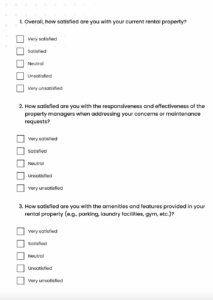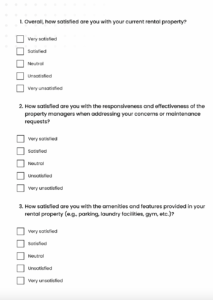Managing rental properties can feel like a constant juggle, especially when it comes to keeping everything in tip-top shape. There’s always something that needs attention, whether it’s a leaky faucet, a finicky HVAC unit, or just routine seasonal upkeep. Without a solid system, it’s easy for minor issues to slip through the cracks, potentially leading to bigger, more expensive problems down the road or even affecting tenant satisfaction.
That’s where having a robust system for tracking all your property’s needs becomes invaluable. Imagine having all the details of every repair, inspection, and upgrade at your fingertips. A well-designed rental property maintenance log template isn’t just a convenient tool; it’s an essential part of smart property management, helping you stay organized, proactive, and compliant.
The Unseen Value of Diligent Maintenance Tracking
Keeping a detailed record of all maintenance activities goes far beyond simply knowing when the dishwasher was last serviced. It’s a strategic move that benefits landlords and property managers in numerous ways, offering a clear snapshot of each property’s health and history. This level of organization transforms reactive problem-solving into proactive asset management, ensuring your investments are well-preserved and continue to generate income without unnecessary headaches.
One of the most immediate benefits is financial. By tracking regular maintenance, you can often catch small issues before they escalate into major, costly repairs. For instance, knowing when the furnace filter was last changed encourages timely replacements, which improves efficiency and extends the life of the unit, saving you hundreds or even thousands in utility bills and premature replacements. A good log also helps you budget more effectively by providing historical data on typical maintenance costs for various items, allowing you to anticipate future expenses with greater accuracy.
Furthermore, a comprehensive maintenance log is an invaluable asset during tenant turnovers. It provides irrefutable evidence of the property’s condition at various points in time. When a new tenant moves in, you can show them a history of proactive maintenance, building trust. When a tenant moves out, the log helps differentiate between normal wear and tear and damage that might be their responsibility, streamlining the deposit return process and preventing disputes.
Beyond financial and practical advantages, a detailed log offers significant legal protection. Should a tenant ever claim negligence or an unsafe living condition, your meticulously kept records can serve as proof that you regularly inspected the property and addressed issues promptly. This can be crucial in court or during dispute resolution, demonstrating your due diligence as a responsible property owner.
Finally, having a clear and consistent record of all work makes it easier to manage relationships with contractors and vendors. You’ll know exactly who performed what work, when, and for how much. This transparency allows you to evaluate vendor performance, track warranties, and ensure you’re getting the best value for your maintenance dollars. A solid rental property maintenance log template truly becomes the backbone of efficient and effective property management.
Key Information to Include in Your Log
- Date of maintenance request or performed work
- Property address and specific unit number
- Description of the issue or task
- Type of maintenance (e.g., preventative, routine, emergency repair)
- Who performed the work (in-house, specific contractor, tenant)
- Cost of parts and labor
- Any follow-up actions required
- Notes or observations about the condition
Choosing and Implementing Your Maintenance Log
With the undeniable benefits established, the next step is selecting the right rental property maintenance log template and integrating it seamlessly into your daily operations. There’s no one-size-fits-all solution, as the best template for you will depend on the size of your portfolio, your technological comfort level, and your specific needs. However, the goal remains the same: to create a centralized, easily accessible, and consistently updated record.
You might start with something as straightforward as a printable PDF template or a simple spreadsheet. These options are excellent for beginners or those managing a small number of properties. They allow for manual entry and provide a clear, structured format. Many free templates are available online that you can customize to fit your specific fields and preferences. The key here is consistency; make sure you or your team are diligent about filling out every entry immediately after work is completed, rather than letting tasks pile up.
For property managers with a larger portfolio or those looking for more advanced features, dedicated property management software often includes integrated maintenance tracking modules. These systems can automate reminders, track expenses for tax purposes, link directly to tenant portals for request submissions, and even manage vendor invoices. While they come with a higher initial investment or subscription fee, the time savings and enhanced organizational capabilities can be well worth it in the long run.
Regardless of the format you choose, make sure your template is easy to understand and use. Overly complex systems can deter consistent input, defeating the purpose. Train anyone who will be using the log on how to accurately record information, and emphasize the importance of detail. Photos of the issue before and after repair can also be an excellent addition to your records, providing visual proof of the work done and the condition of the property.
Tips for Effective Log Implementation
- Review and update your log regularly, at least monthly.
- Keep all related receipts and invoices organized, perhaps by attaching them digitally to your log entries.
- Standardize your terminology so everyone understands what each entry means.
- Make it accessible to relevant parties like co-owners or trusted team members.
By implementing a systematic approach to maintenance tracking, you’re not just performing a task; you’re building a comprehensive history for each property. This detailed record becomes a valuable asset itself, offering insights into longevity of components, common issues, and overall operational efficiency. It’s an investment in the long-term health and profitability of your real estate ventures.
Embracing a solid maintenance log strategy empowers you to make informed decisions, minimize unexpected costs, and foster positive relationships with your tenants. It removes much of the guesswork from property upkeep, replacing it with data-driven confidence. Ultimately, it allows you to focus more on growing your portfolio and less on chasing down forgotten repairs or lost paperwork.



